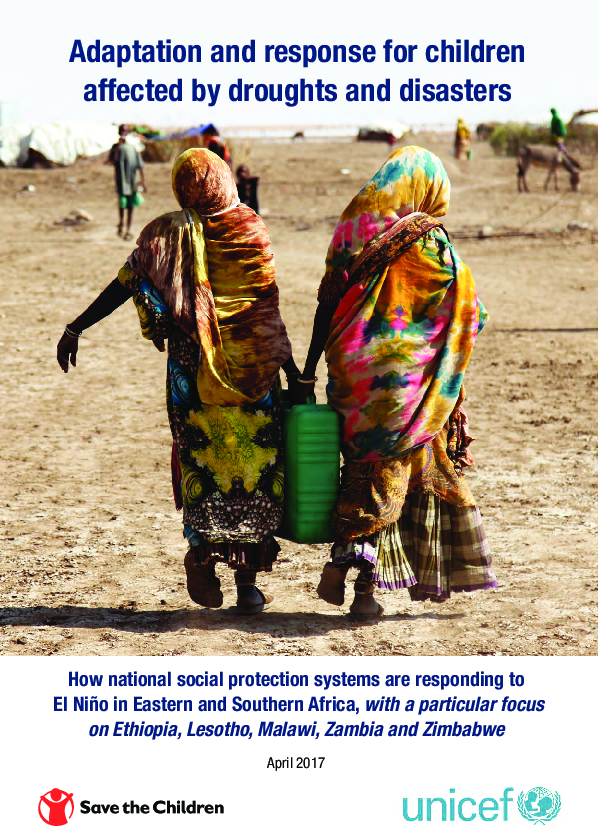
Case Studies and Success Stories, Reports, Study: Research
Adaptation and Response for Children Affected by Droughts and Disasters
Publication year:
2017
English
Format:
pdf (4.1 MiB)
Publisher:
Save the Children,UNICEF, United Nations Children's Fund
Weather-related stresses associated with El Niño in 2015–2016 have severely impacted 60 million people. Governments across the globe are dealing with the consequences as they affect food security, livelihoods, and the well-being of their populations. Several of the hardest hit areas are in Eastern and Southern Africa, where drought affects countries already struggling with changing climate and weather patterns and chronic vulnerability, including poverty and food insecurity. The effects of El Niño will continue to exacerbate malnutrition, livelihood loss and poverty for months to come.
Social protection is a leading strategic response to chronic poverty and vulnerability; its key role in supporting development has been recognized in the Sustainable Development Goals. Social protection systems are proven to be an efficient and costeffective means of reaching the most vulnerable households – a functionality that may be used both as a means to support those living in chronic poverty as well as at times of crisis.
This review was commissioned by UNICEF and Save the Children, with support from FAO, to provide an overview of how national governments and partners in countries in Eastern and Southern Africa are adapting existing social protection systems to respond to shocks. The study looks in particular at how social protection systems support children and families in the context of the El Niño response, with a focus on 5 countries: Ethiopia, Lesotho, Malawi, Zambia and Zimbabwe.
Read full abstract
View & Download
English
1 Documents
Document information
Format
Content type
Region
Rights
© Author/Publisher
Found a mistake? Help us improve!
If you have noticed a document assigned to the wrong author or any other inaccuracies, let us know! Your feedback helps us keep our data accurate and useful for everyone.
Share
Link


